Archive
2020
KubaParis
Kammerspiel
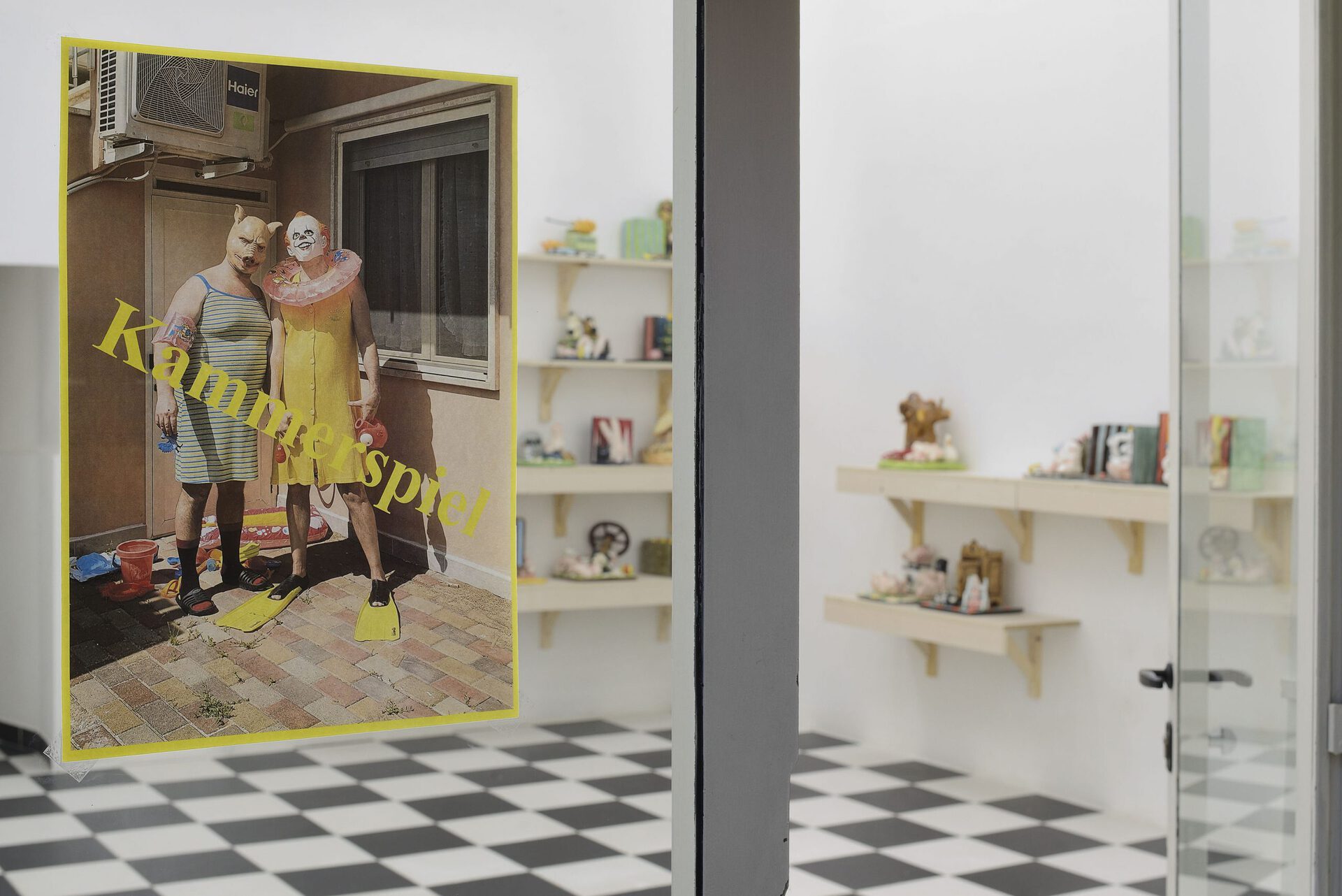
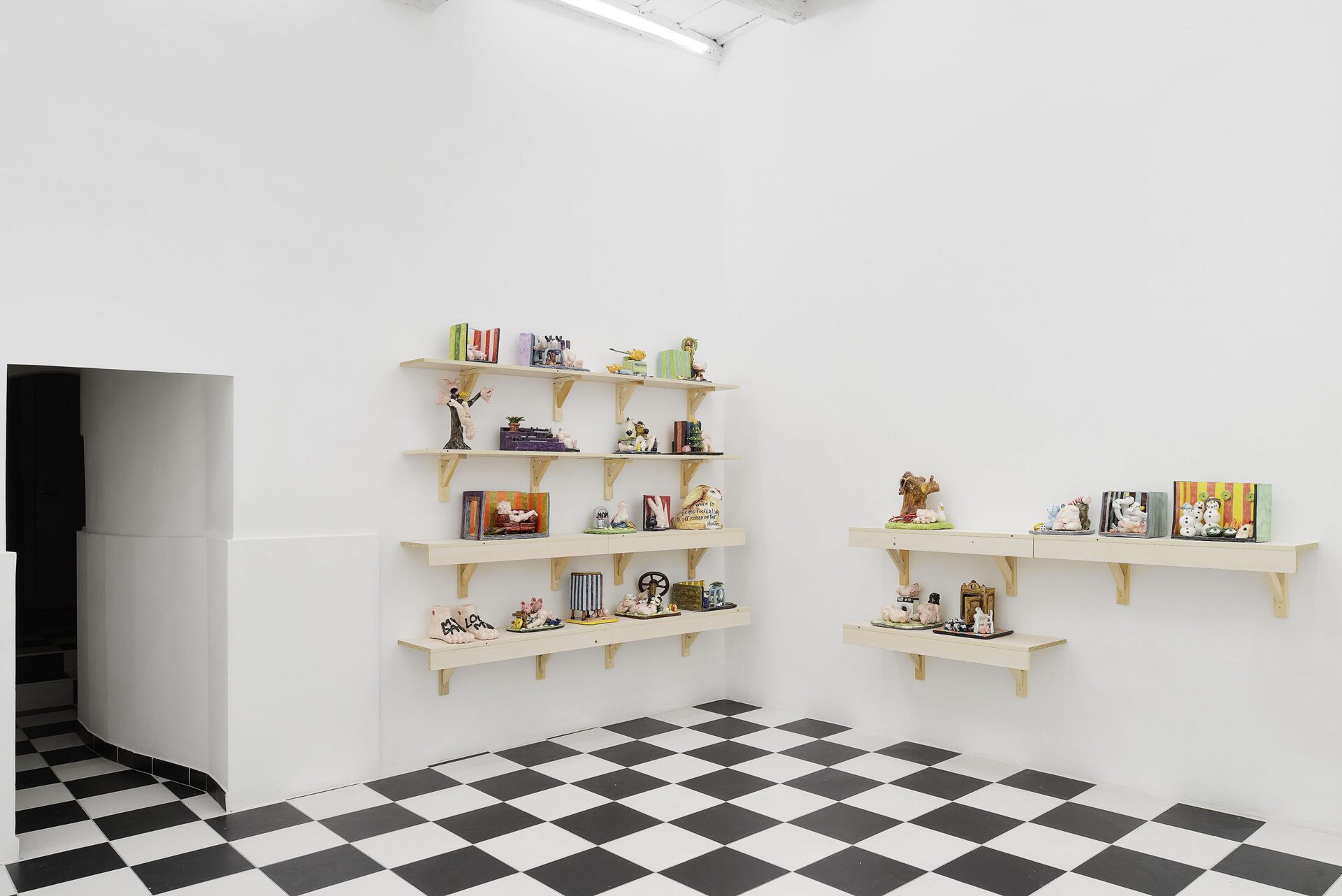
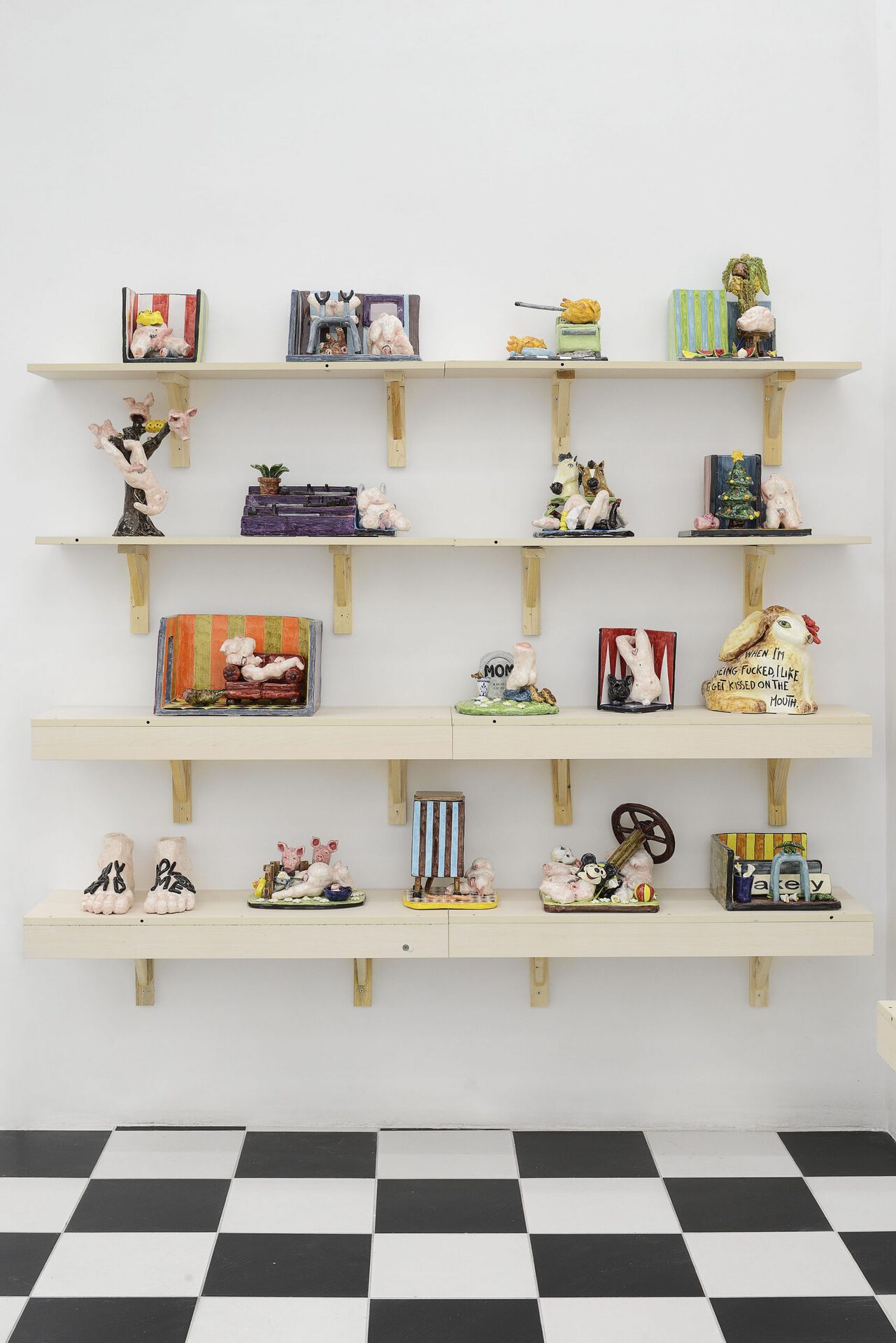
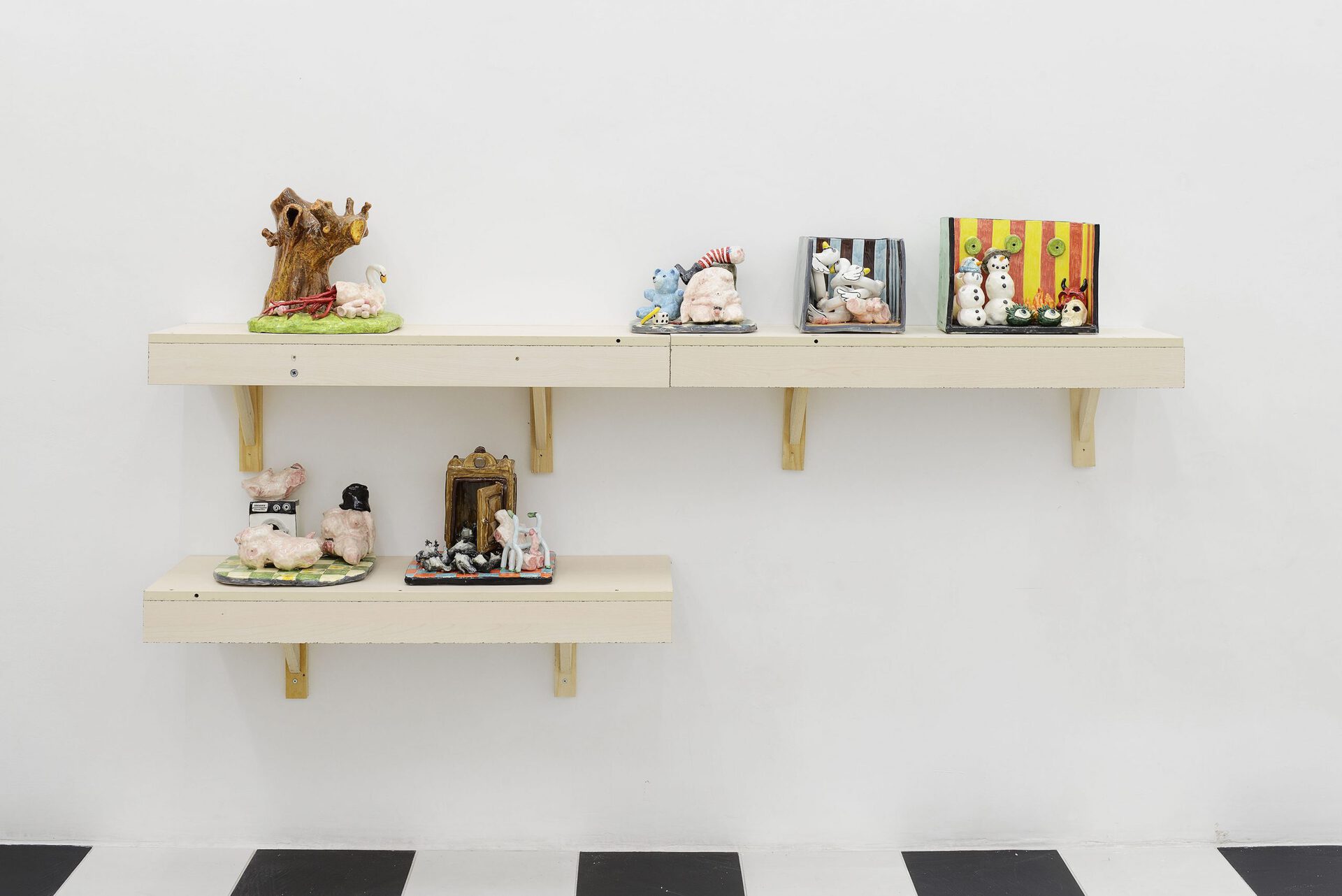
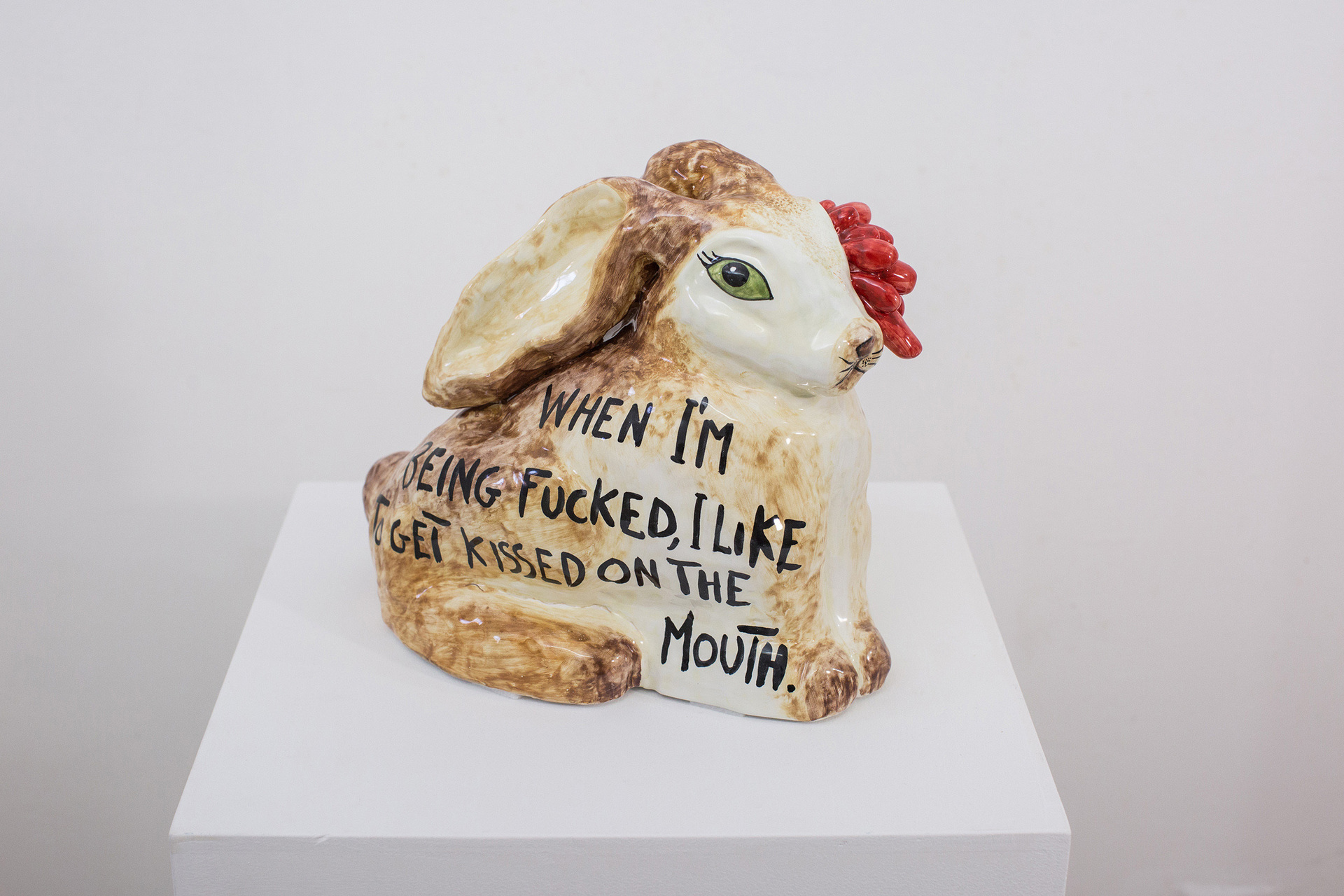
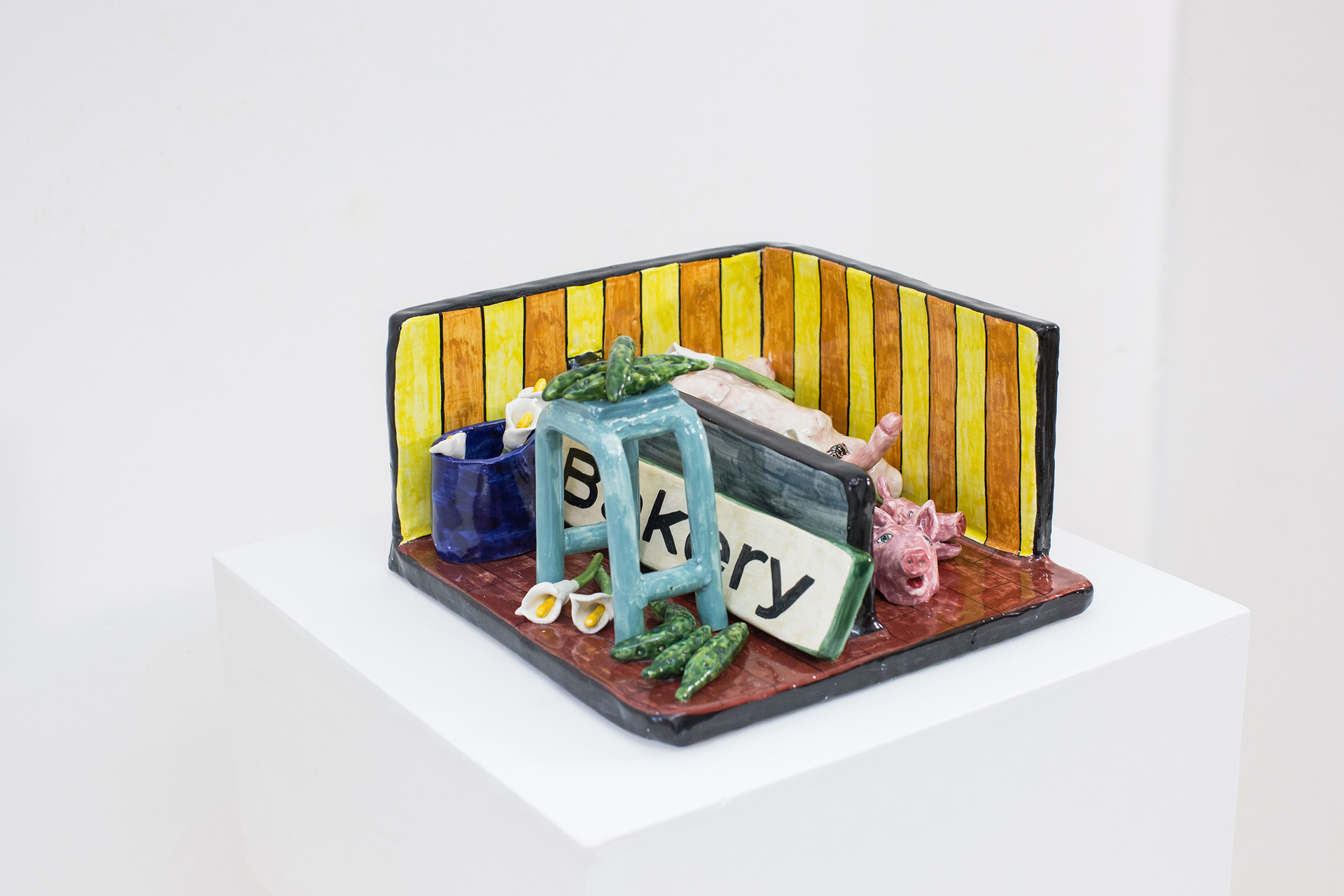
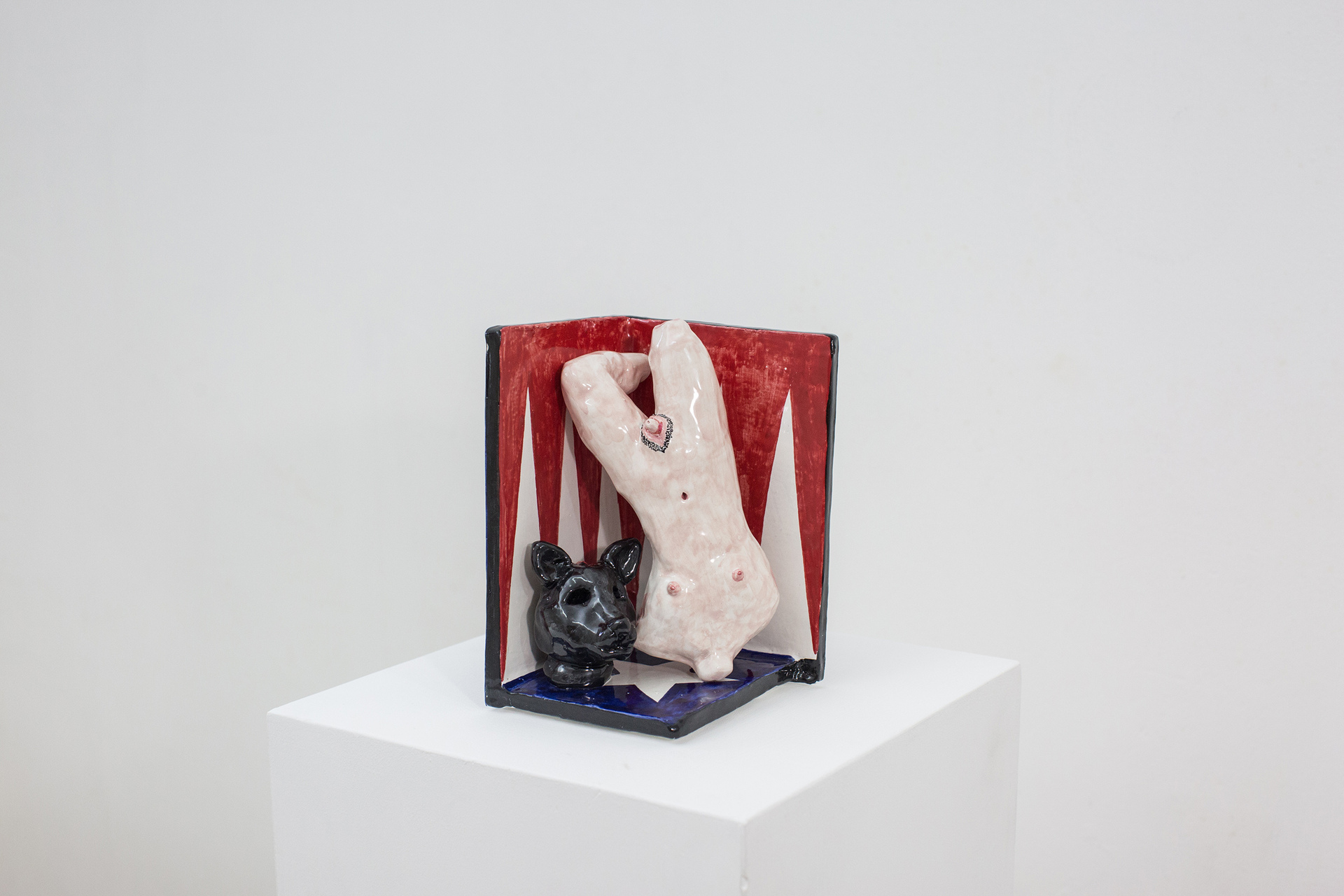





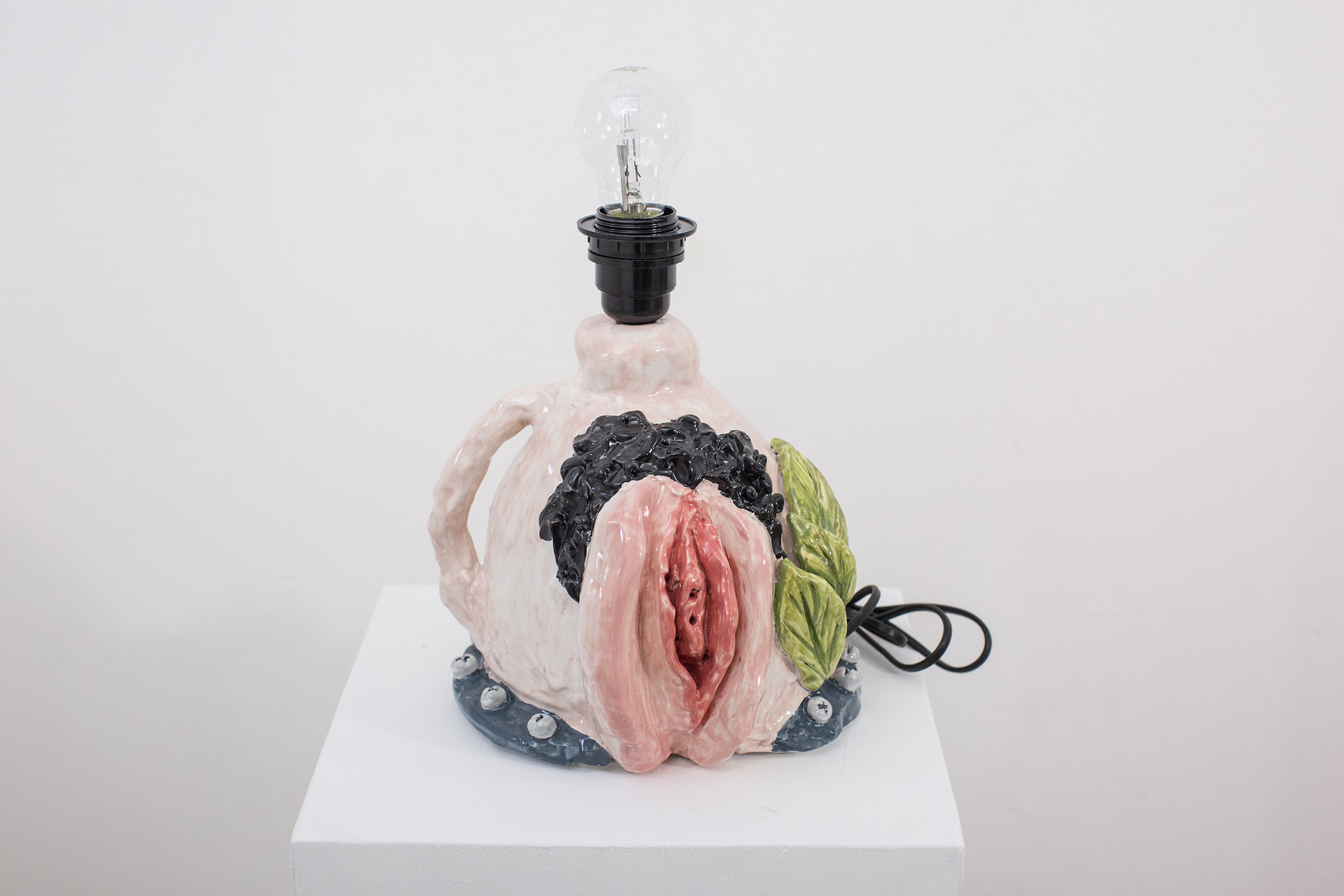
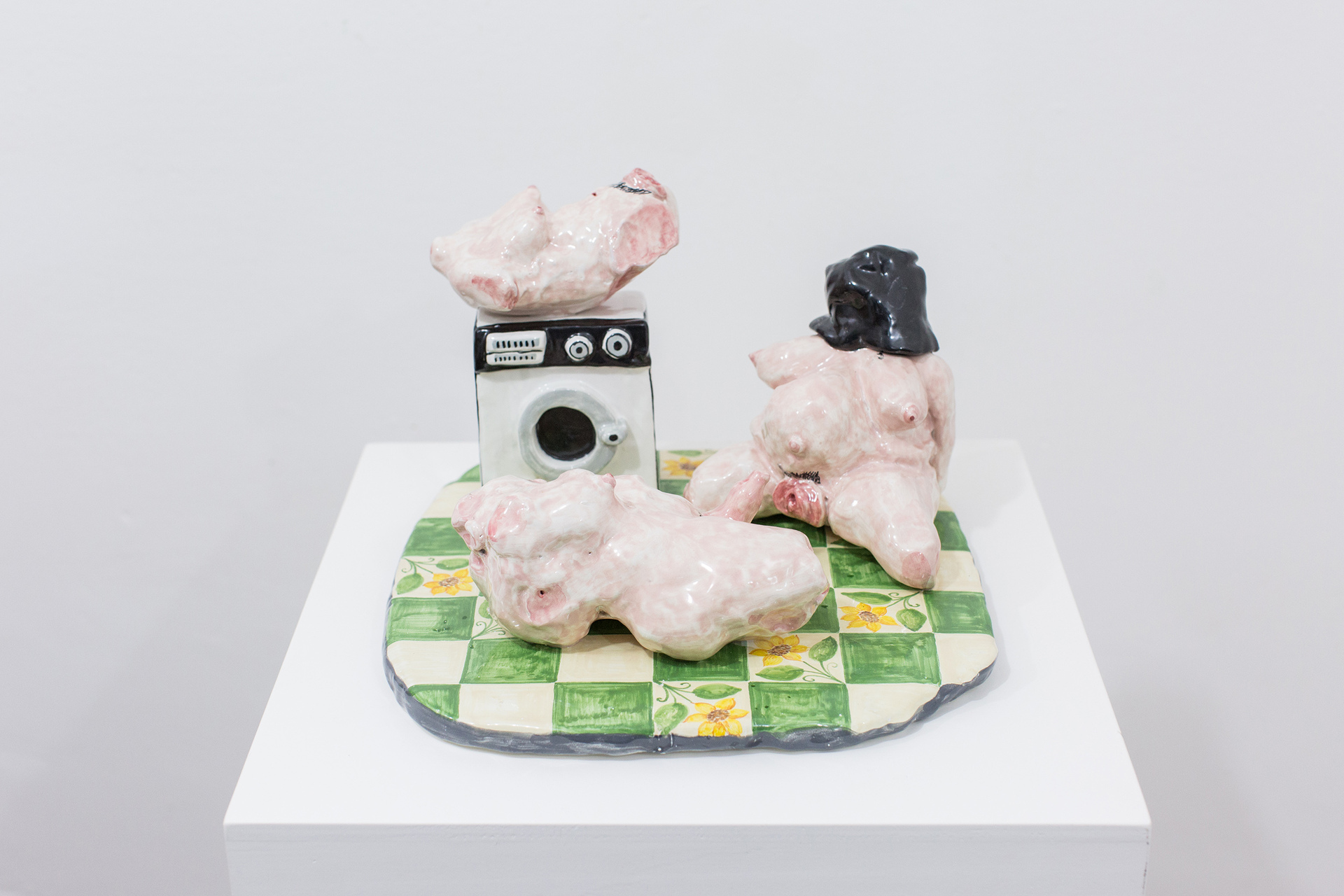
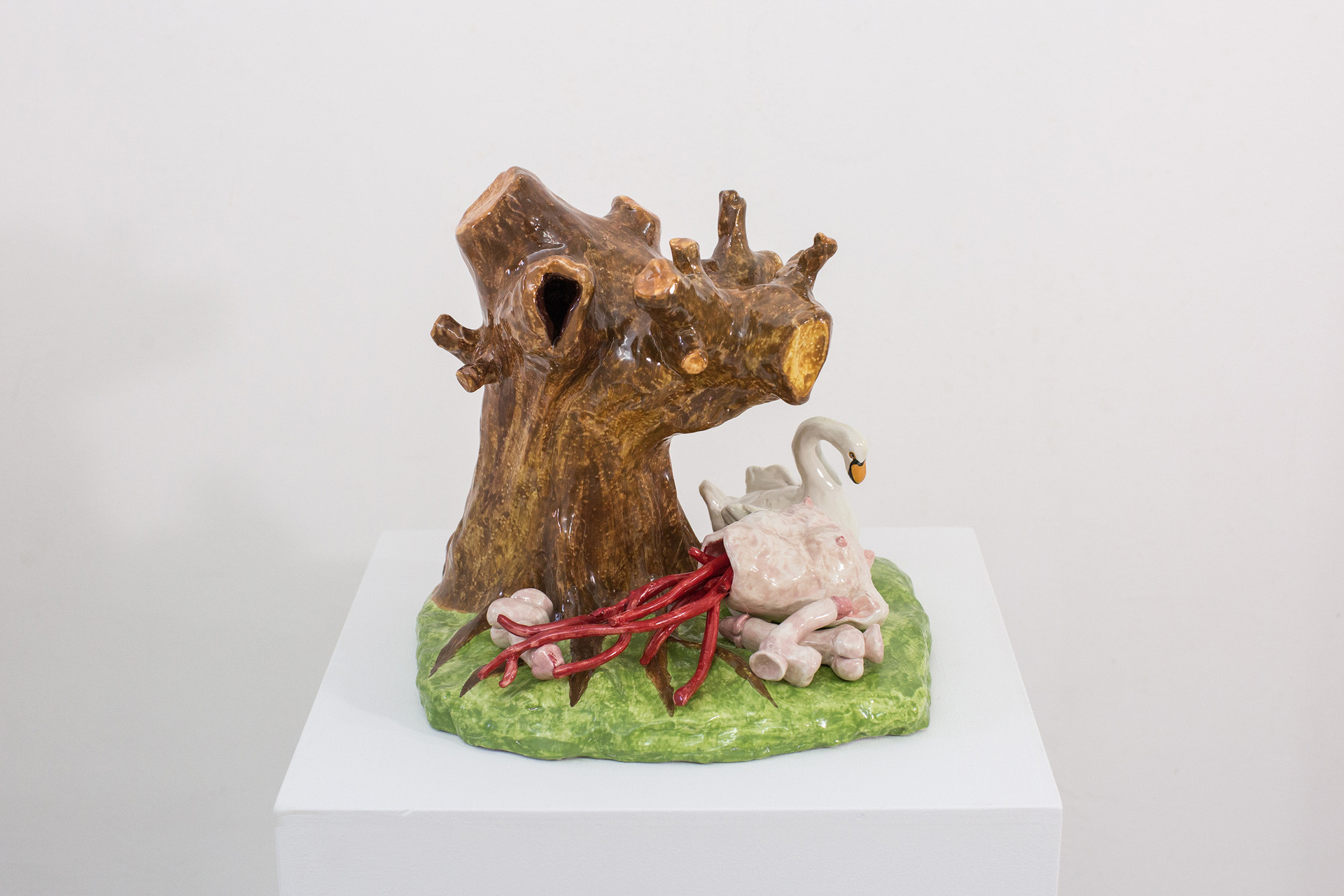
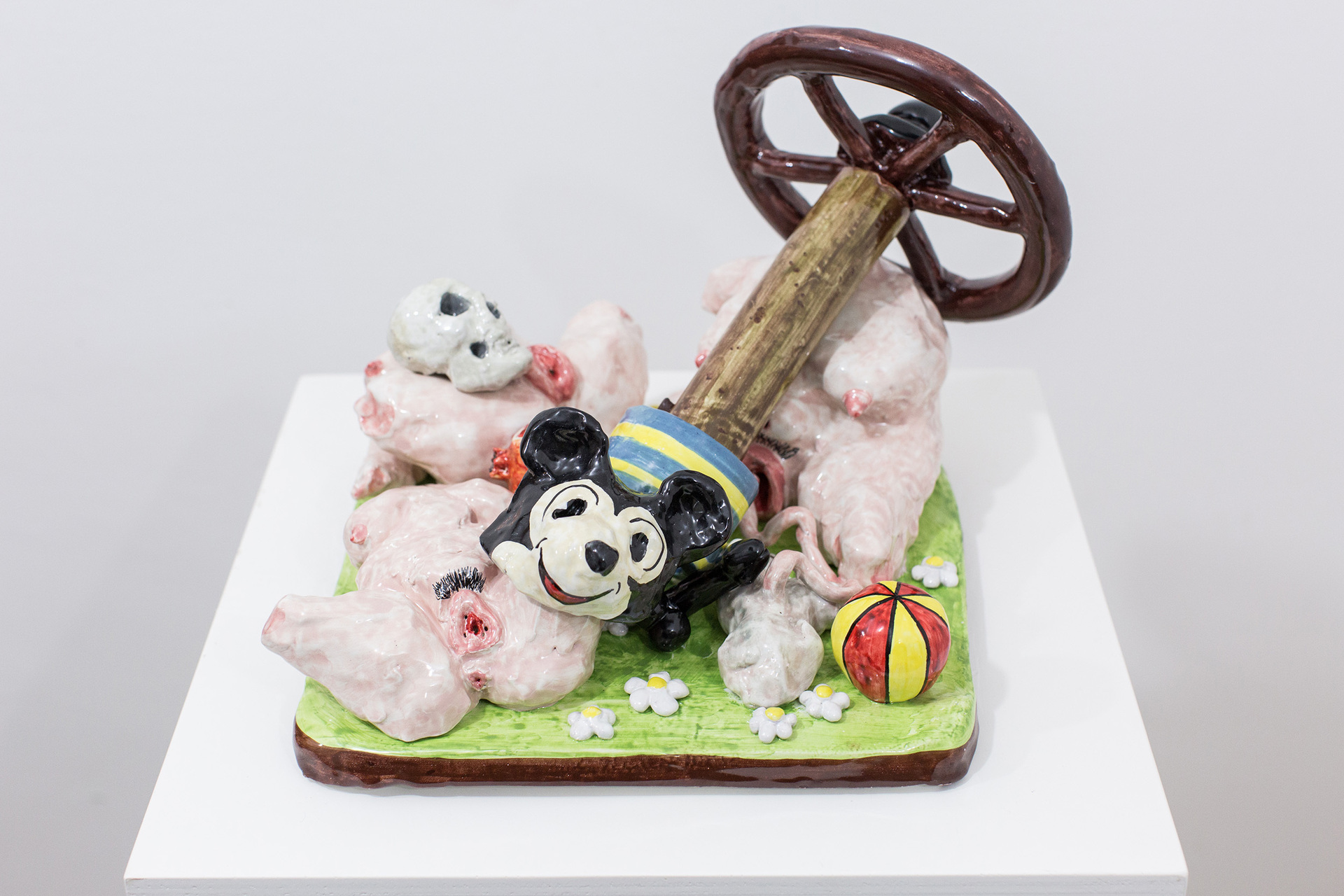

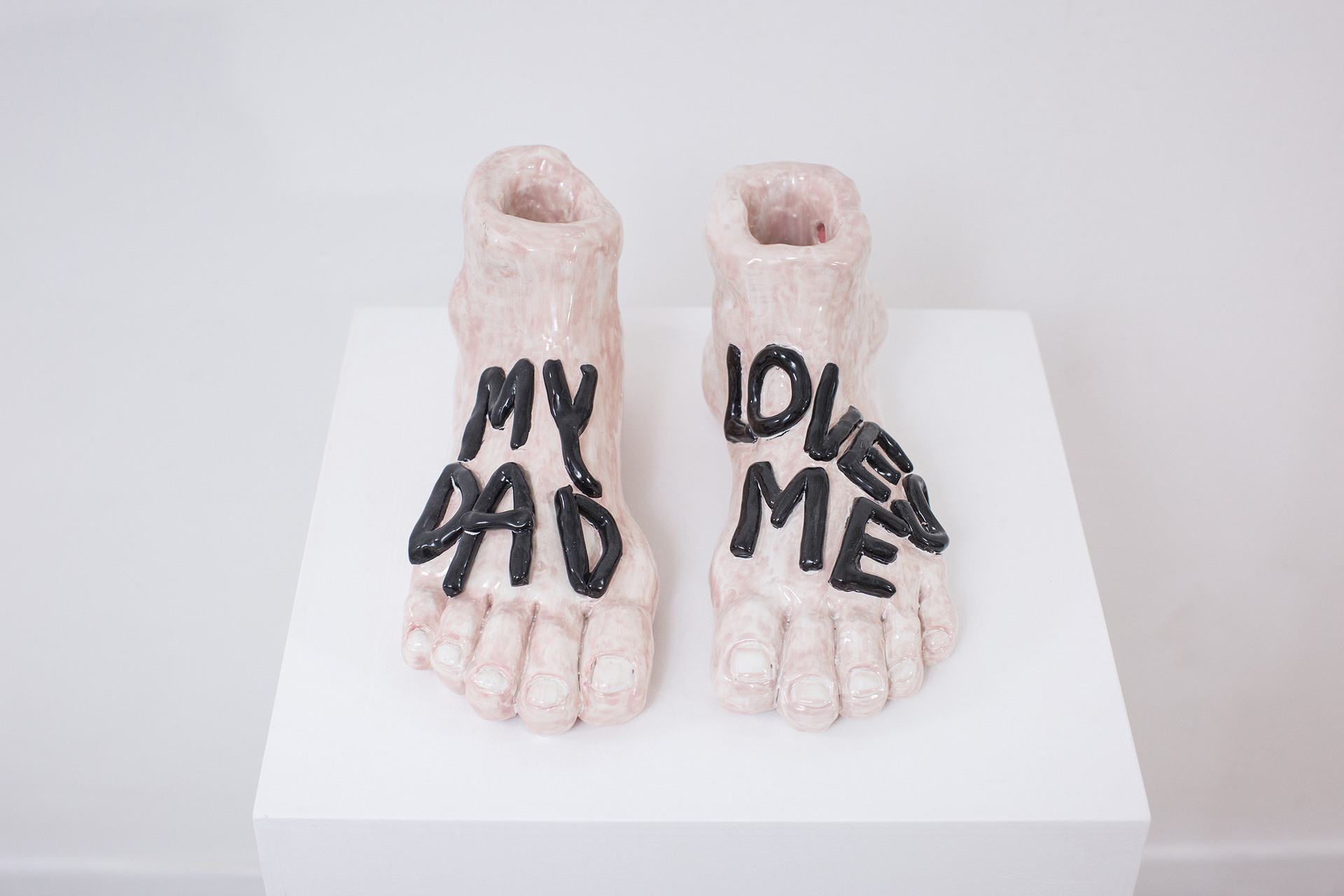
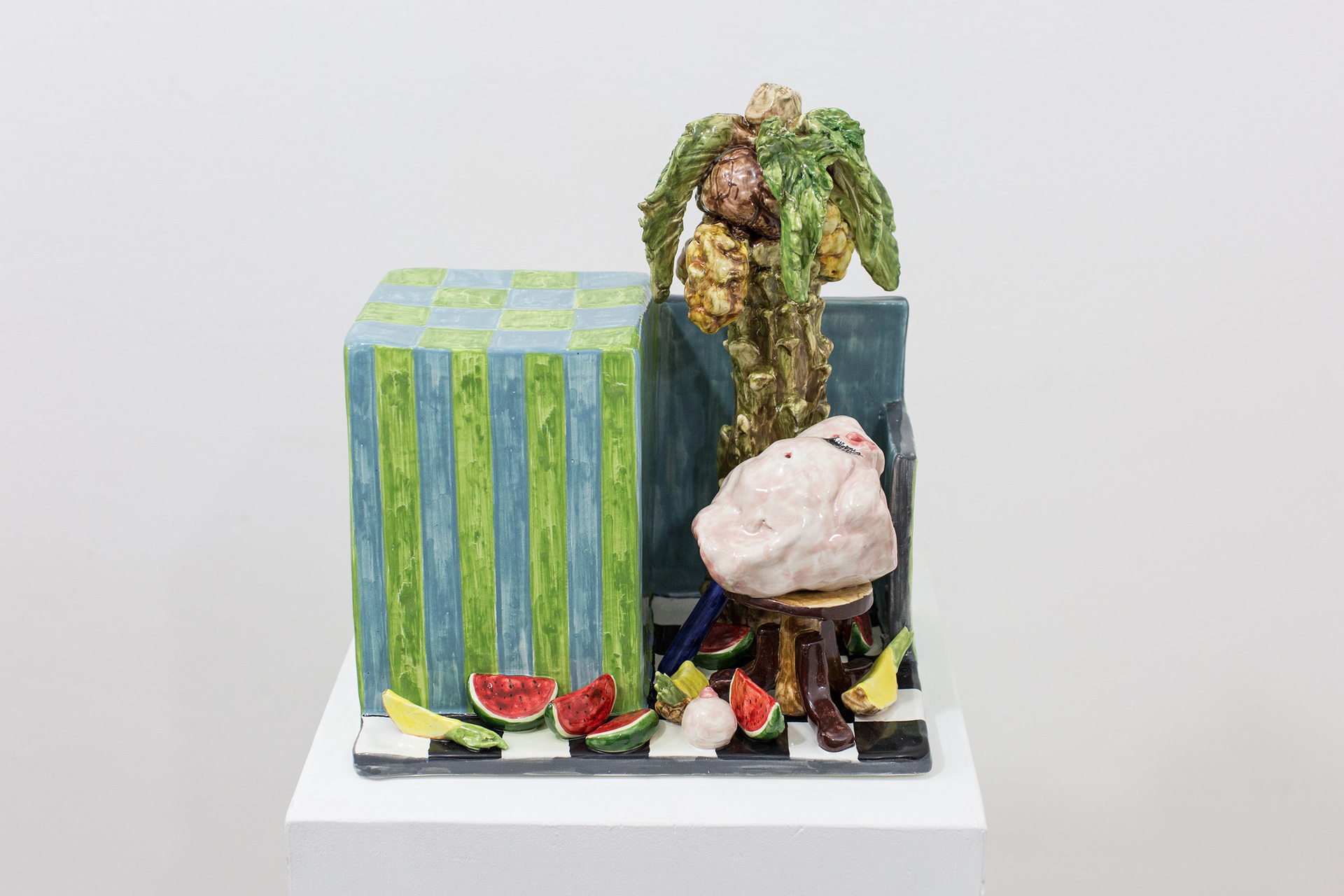
Location
ADADate
04.12 –12.02.2021Photography
Roberto ApaSubheadline
Eva Hide is a duo composed by Leonardo Moscogiuri and Mario Suglia. The exhibition is composed by a selection of 25 small sculptures in painted majolica, produced by the duo, born in Puglia and based in London, between the 2018 and 2019. The indissoluble bond between death and sexuality, loneliness and diversity steeped in Eva Hide’s work is narrated in each scene depicted by the artwork, which reveals itself as plastic still frame, a “frozen” instant extracted from a long movie. In Eva Hide’s practise the objective depiction of reality leaves its place to a more perceptive dimension transfigured by corruption and degradation, where the exposed and caricatural sex gives life to a deliberated pornography that alludes to the need of love and to constant danger burdening on ingenuity of human nature.Text
Eva Hide’s apologue works reveal themselves as plastic still frames. “Frozen” instants extracted from a long movie, as well as from a perturbing and disturbing favolaccia (lit. bad fairy tale) that dares to tell a story, echoing David Lynch’s dreamlike abysses – i.e. recalling the deformed child in Erasehead, or Joseph Merrick’s hurtful, separated, and discriminated world in The Elephant Man. And yet other references draw from Goya’s maniera oscura (obscure manner(s)) – more dysfunctional and horrific than the Quadritos - and from the Expressionist practises in cinema which Eva Hide draws from as a form of natural disposition […].
Their objective depiction of reality makes room to a more perceptive dimension, which is then transfigured by corruption and degradation, as this is what human nature inflicts to itself. In that special unity of place originating from the abstraction of the context of normality, the most delicate creatures in the collective minds - pets, bunnies, kids, flowers and fruits - shipwreck in the storm of psychic neurosis, ambiguous identities, and past violence. Along with them, also daily symbols, objects from joyful moments, the most fragile thoughts and feelings, the reassuring rhetoric illusions also shipwreck. […] “it won’t be all fine,” this is what Eva Hide seems to repeat. Behind that abused face of things, in the obscure labyrinths of our homes, inside of us, as a song says, little and big daily silent crimes happen. Covered up by hypocrisy.
The indissoluble bond between death and sexuality, loneliness and diversity characterizing Eva Hide’s work explains the aggressive and exhibited presence of sexual shape, both masculine and feminine. [Their work exacerbates] objects of desire and pleasure, but also the paroxysmal synecdoche of violence that overwhelms innocence, ambiguous miscommunication, and the hypothalamic chaos. The exposed and caricatural sex gives life to a deliberated pornography seeking liberation utopias, which alludes to the need of love and to the constant danger burdening the innocence of the world.
The static frame, the close-up view, the strong contrasts, the sharp figures with Expressionist cinematic make-up and the oppressing feelings of dwelling with evil deriving from it are all elements that strongly emerge in Eva Hide’s work. Not as a model to look at, but as an elective affinity. This affinity is counterbalanced by yet another distinctive and poetic element, which unmarks its oeuvre and makes it even freer from definition: the sense of game, of transgressive mockery, the shameless courage to practise light irony like a smile - heavy like a pain, but yet able to enlighten obscurity.
Kammerspiel is an invitation to an intimate dialogue to those who are willing to carefully listen to Eva Hide’s Favola Nera da Camera.
Abstract from:
Francesco Castellani, Welcome to Eva Hide’s cinema, 2020
Francesco Castellani